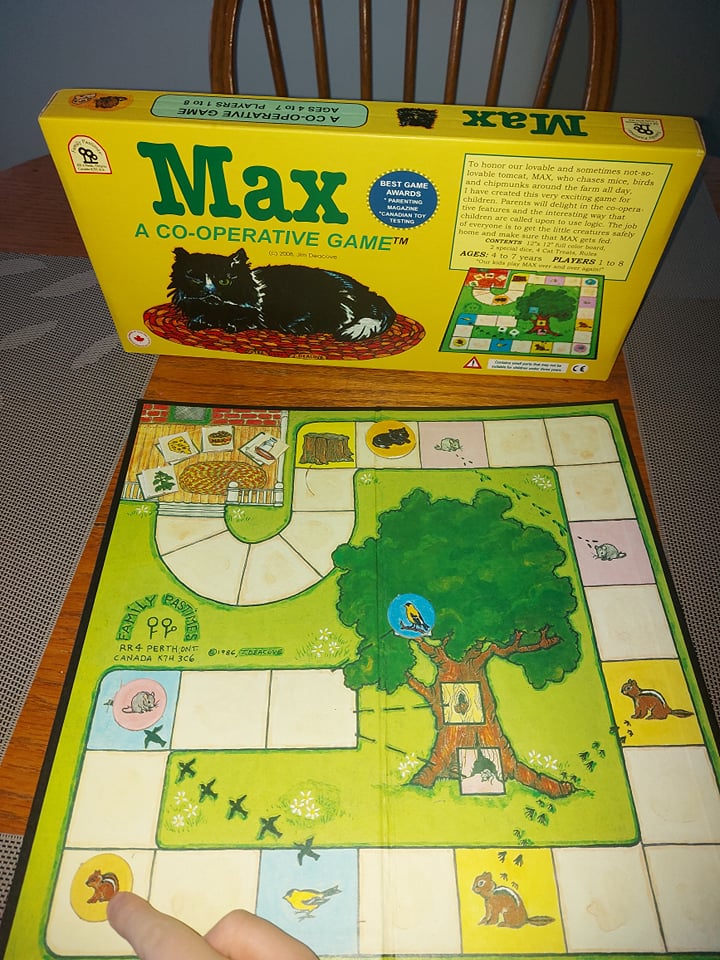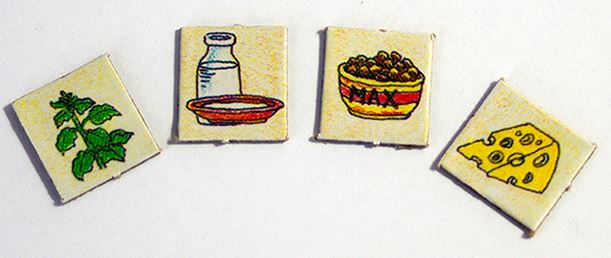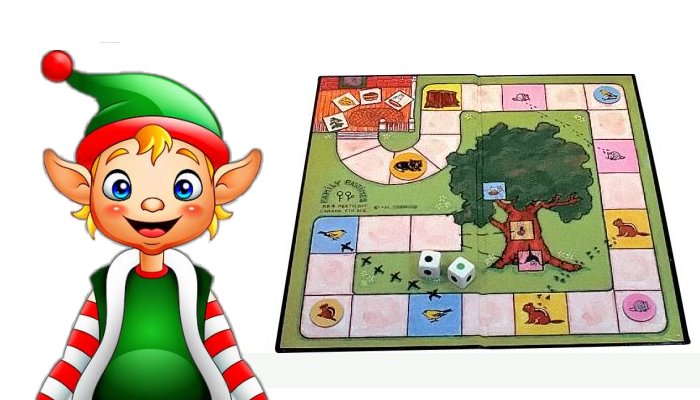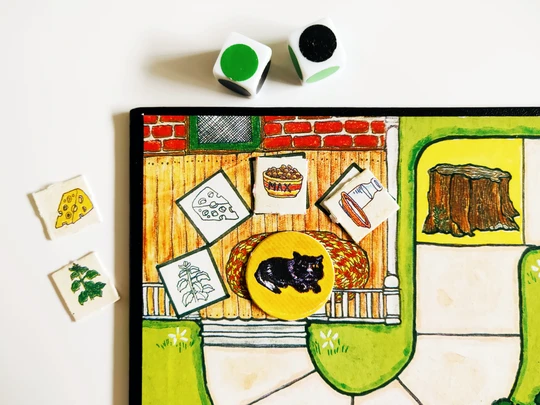 Cooperative board games are games in which players work together to achieve a common goal. They are great for younger children as they help promote collaborative skills and teach sportsmanship. There is less an emphasis on winning, so a child gains confidence playing the game. Family Pastimes is a Canadian company in Perth, Ontario, that fosters the spirit of co-operation in their games. The company started as a cottage industry in 1971 by Jim and Ruth Deacove. Jim started making co-operative games for his own family, and was encouraged by friends to make more. It was from there the business grew. Some of you might very well recall Family Pastime games from your own childhood. One of Family Pastimes co-operative games we own is called Max. The co-operative board game for children aged four to seven is based on a loved family cat named Max.
Cooperative board games are games in which players work together to achieve a common goal. They are great for younger children as they help promote collaborative skills and teach sportsmanship. There is less an emphasis on winning, so a child gains confidence playing the game. Family Pastimes is a Canadian company in Perth, Ontario, that fosters the spirit of co-operation in their games. The company started as a cottage industry in 1971 by Jim and Ruth Deacove. Jim started making co-operative games for his own family, and was encouraged by friends to make more. It was from there the business grew. Some of you might very well recall Family Pastime games from your own childhood. One of Family Pastimes co-operative games we own is called Max. The co-operative board game for children aged four to seven is based on a loved family cat named Max.
The object of the game is to get a bird, chipmunk and mouse back to their tree home before Max the cat eats them. After-all it is a cat’s basic instinct to hunt for such critters.
The shortcuts:
Each of the four critters has it’s own shortcut. If the animal lands on its picture, it moves to the second picture (like a latter in Snakes and Ladders). Only the animal pictured on the shortcut can use it. Max, however, can use all the shortcuts.
Playing Max

Game play is pretty basic that children younger than four might be able to play a long too. Players take turns rolling the two special dice that come with this game. The green dots move a critter along the path. The black dots move Max along the same path. Each player gets to decide on their turn which critter they are going to move. Two green dots means you can move two different critters one space each or one critter two spaces. Two black dots means Max moves two spots. If Max lands on the same space as a critter, it has been caught by him and is removed from the game. Play continues with the remaining critters.
Max’s Cat treats:

There are four treats that you can use to call Max back home if he gets too close to the critters. Simply place one of four treats on the porch and return Max to the porch. Once a treat has been used, it can not be used again.
Winning Max:
Each creature must make it safely home. Max cannot go to the big tree. He can only go as far as the last space by the big tree. Even if one animal is eaten, you can continue playing the game to see if you can get any of the creatures home safety.
Max works as a single-player game or a game to be played with up to eight players.
The game is hand-made in Canada using recycled boards and papers, soy-based inks, water based glues and safe paints.
The co-op style of the game is great for elementary-aged kids. And it is a perfect game for teaching children board game strategy. Even though my daughter is turning nine, she really enjoys playing Max with me and on her own.
I encourage you to drop by https://familypastimes.com and make Christmas more enjoyable with a family favorite from Family Pastimes Co-operative Games.Sadly, Jim and Ruth are selling the business. If you are interested in purchasing Family Pastimes please reach out to Jim. We are hopeful that family pastimes c-operative games might be around for another 50 years for a new generation of children to enjoy.


Cooperative games emphasize play rather than competition. I love such games and have a few I play with my daycare kids.
I’m not a competitive person so I mainly purchase coop games to play with my daughters and son. This game sounds like fun.
By any chance could you provide some help on which Family pastime games are best for which ages?
I highly suggest you check out their game Lost Puppies. A lot of fun!
I like the idea of a cooperative game!